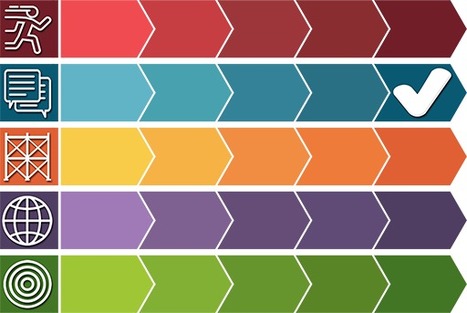Research and publish the best content.
Get Started for FREE
Sign up with Facebook Sign up with X
I don't have a Facebook or a X account
Already have an account: Login
 Your new post is loading... Your new post is loading...
 Your new post is loading... Your new post is loading...
|

elearning at eCampus ULg's curator insight,
March 20, 2016 5:04 AM
A l'Université de Liège, cela fait déjà 3 ans que nous testons des activités demandant que les étudiants produisent des capsules multimédia sur différentes formes et les résultats sont bluffants ! : https://www.erudit.org/revue/ncre/1995/v2/n3/1018199ar.pdf 
Mus's curator insight,
March 20, 2016 5:11 AM
Un très intéressant article concernant les modalités d'intégration des TICs dans l'apprentissage actif des étudiants. Il existait déjà plusieurs modèles d'intégration des technologies dans l'enseignement ou en terme de développement professionnel des enseignants : l'ancien ACOT, le LOTI ( levels of technology Integration), le SAMR. Ici, c'est de l'apprentissage qu'il s'agit, de l'activité d'apprentissage de l'élève. Cela me rappelle un déjà ancien travail (1995) sur les niveaux d'interactivités de l'interactivité fonctionnelle à l'interactivité relationnelle : https://www.erudit.org/revue/ncre/1995/v2/n3/1018199ar.pdf

Marcel Lebrun's comment,
March 20, 2016 9:02 AM
Oui, mais la méthodologie Creadim citée dans l'article que j'ai mis en référence date d'entre 1990 et 1995 ... Les étudiants créaient du Multimédia avec des Authoring tools comme on disait alors ...
|












The Technology Integration Matrix (TIM) provides a framework for describing and targeting the use of technology to enhance learning. The TIM incorporates five interdependent characteristics of meaningful learning environments: active, collaborative, constructive, authentic, and goal-directed. These characteristics are associated with five levels of technology integration: entry, adoption, adaptation, infusion, and transformation. Together, the the five characteristics of meaningful learning environments and five levels of technology integration create a matrix of 25 cells, as illustrated below. Developed by the Florida Center for Instructional Technology (FCIT), the TIM is in its second version.